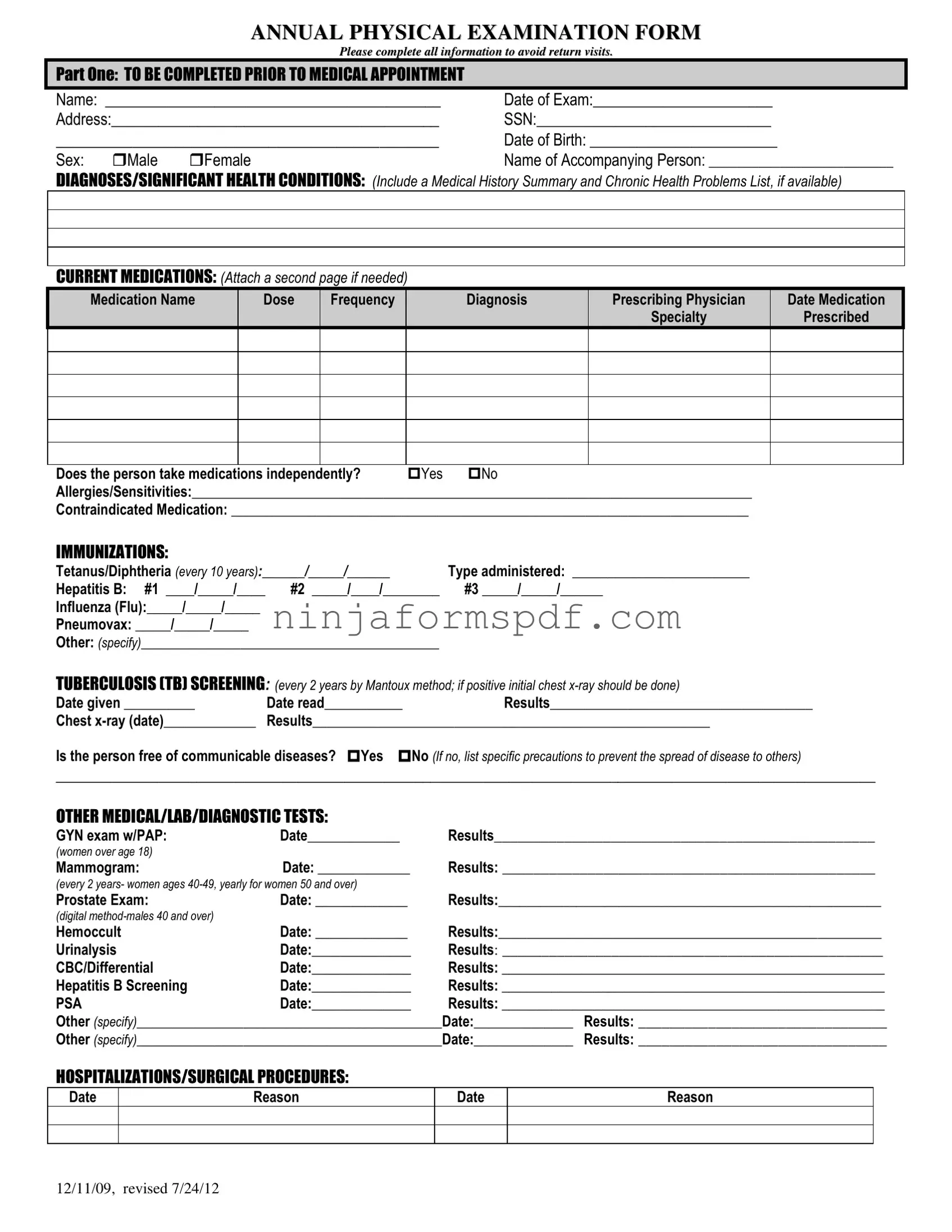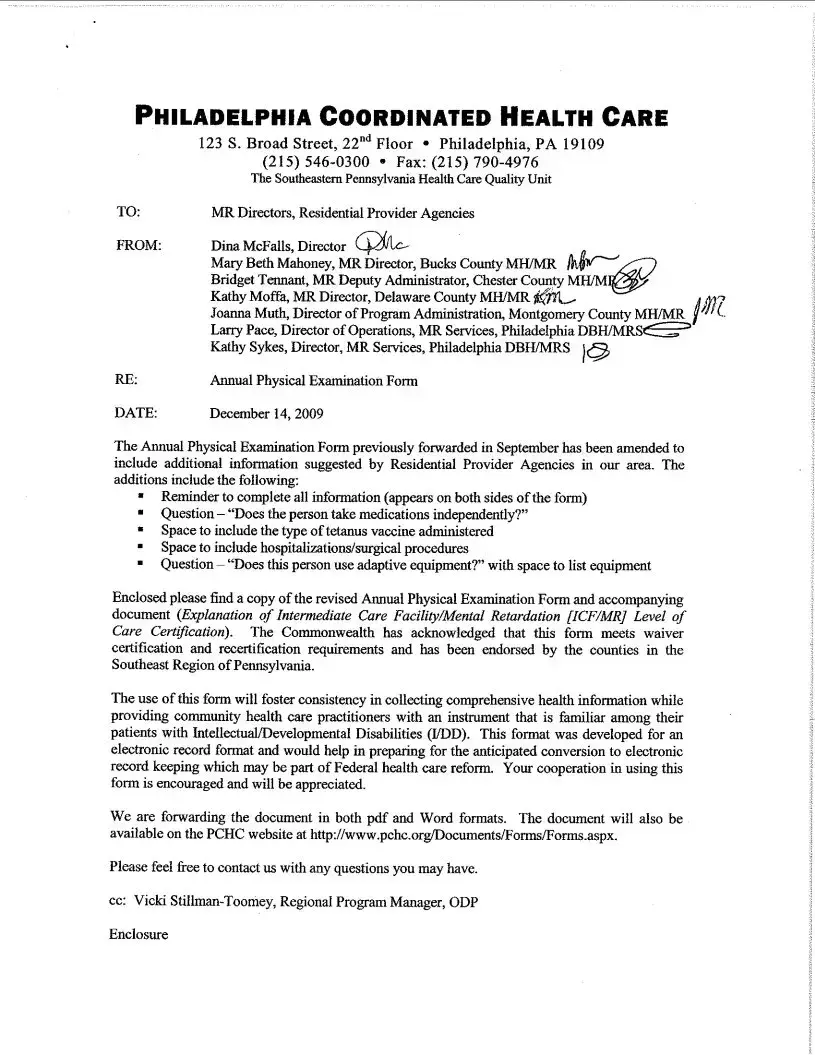What information should be completed before the medical appointment?
Before your medical appointment, you should complete parts concerning your personal information, which includes your name, the date of the examination, address, Social Security Number, date of birth, gender, and the name of any accompanying person. This section also asks for diagnoses or significant health conditions, a list of current medications (with an option to attach a second page if more space is needed), allergies/sensitivities, contraindicated medication, immunizations, tuberculosis screening, and any other medical, laboratory, or diagnostic test results. It's important to provide as complete a picture as possible to ensure accurate care and avoid the need for a return visit to complete missing information.
Which vaccinations and screenings are required?
The form requires updates on Tetanus/Diphtheria, Hepatitis B, Influenza, Pneumovax, and other vaccinations as specified by the individual or healthcare provider. Furthermore, a tuberculosis (TB) screening is requested every two years through the Mantoux method, with a chest x-ray required if the initial test is positive. This information helps in assessing your current immunization status and identifying any necessary updates to maintain health and prevent disease.
What information is asked about medications?
For medication, the form requires detailed information including the name of each medication, the dose, frequency of intake, the diagnosis for which it was prescribed, the prescribing physician's name, the medication's specialty, and the date it was prescribed. It also inquires whether the person takes medications independently. This comprehensive overview ensures that healthcare providers are fully informed about your medication regimen, which assists in preventing adverse drug interactions and ensuring the efficacy of treatment plans.
Are there specific tests and examinations for women and men?
Yes, the form specifies certain tests based on gender. Women over the age of 18 are asked to provide information on GYN exams with PAP smear results, and the guidelines for mammograms vary by age, recommending them every two years for women ages 40-49 and yearly for women 50 and over. For men, a prostate exam is advised for those 40 and over utilizing the digital method. These requirements help in early detection of potential health issues specific to each gender.
What should be listed under hospitalizations/surgical procedures?
Under hospitalizations and surgical procedures, the dates and reasons for any hospital stays or operations should be recorded. This history provides essential insights into past medical issues and interventions that might affect current health status or influence future medical decisions.
What is included in Part Two: General Physical Examination?
Part Two requires the completion of basic physical measurements like blood pressure, pulse, respirations, temperature, height, and weight. An evaluation of various systems such as eyes, ears, nose, mouth/throat, cardiovascular, musculoskeletal, and others is included, with an option to note the findings as normal or not, and space for additional comments. Information on vision and hearing screenings, with notes on whether further evaluation is recommended, is also requested. This comprehensive examination aims to give a holistic view of the individual's current health status.
How are changes in health status from the previous year documented?
Changes in health status from the previous year should be specified, including any new diagnoses, changes in medication, significant improvements or deteriorations in health conditions, or the development of new symptoms. This comparison to the previous year’s health status can provide valuable context for changes in health over time, indicating progress, recovery, or the emergence of new health concerns.



